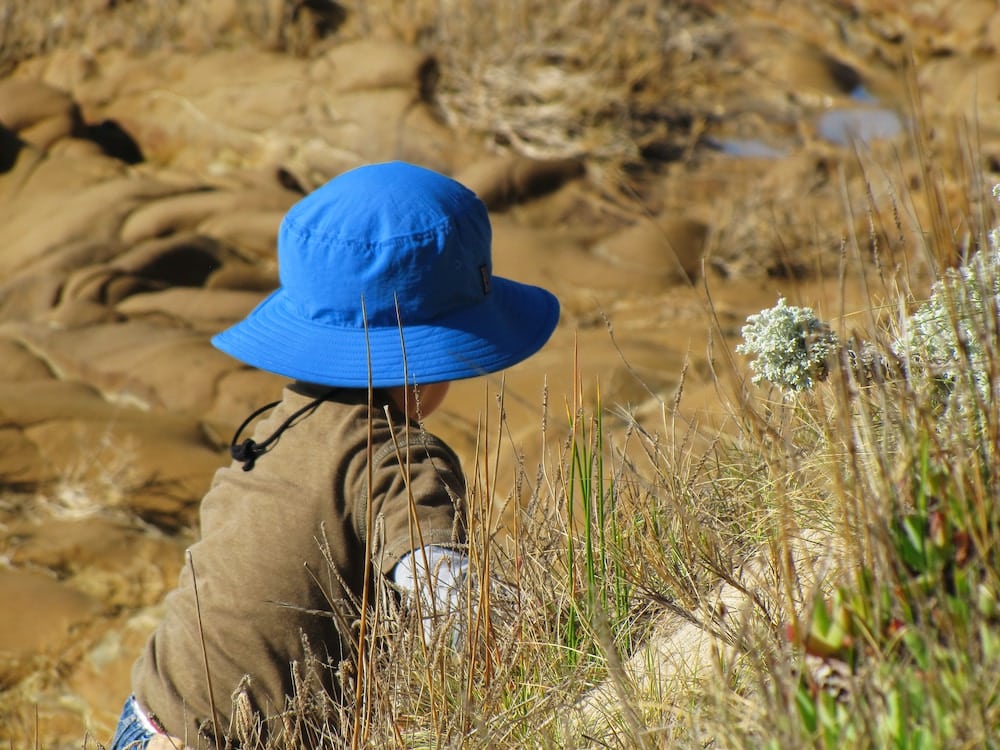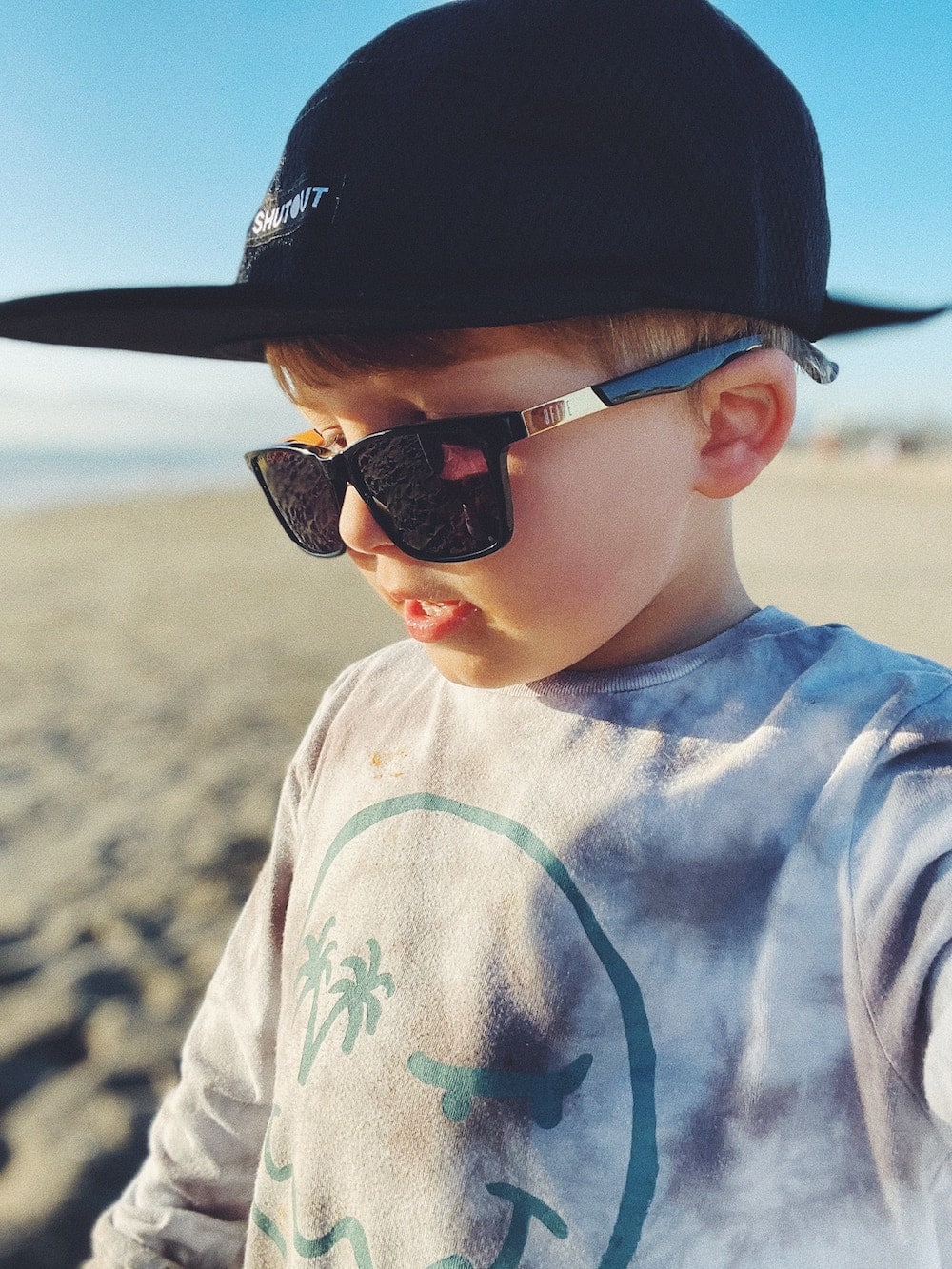Sun Safety Tips for Kids

Why protect children’s skin from the sun?
Skin cancer is very serious and very common. The cause of most skin cancers is repeated exposure to the sun and sunburns year after year.
When children learn at an early age how to properly protect their skin from the sun, they are more likely to continue doing so as they grow up. This helps to reduce their risk of skin cancer. Teaching children good sun habits is similar to teaching them to wear a seatbelt in the car, or a helmet while riding a bike. It reinforces healthy habits at an early age.
What kind of damage is caused by sun exposure?
Sun exposure and sunburns are major risk factors for most skin cancers, including melanoma, the deadliest form of skin cancer. The sun’s energy that reaches earth contains rays of visible light and invisible (ultraviolet) light.
About UVA and UVB Ultraviolet (UV) Rays
When skin is exposed to UV rays, these rays can damage skin cells, causing visible and invisible injuries. There is no such thing as safe UV rays.
- UVA rays: These are the aging rays that cause invisible damage to the skin. Some of the damage is reversible, but repeated exposure to UV can cause cumulative damage to skin cells over the years. After years of exposure, this accumulated damage appears as wrinkles and age spots and can lead to skin cancer.
- UVB: These rays are better known as the burning rays that cause sunburn, a visible injury which appears just a few hours after unprotected sun exposure. In many people, UVB damage may result in a tan, which is the skin’s way of protecting itself from further injury. There is no such thing as a safe tan. Freckles, which occur in people with fair skin, are usually due to repeated sun exposure. Sunburn, suntan, and freckles are signs of UV damage and the need for sun protection. UVB light is blocked by window glass, but UVA rays are able to pass through window glass, so people need to protect their skin every day of the year.
Without sun protection, people who spend time in the sun tend to develop tough, leathery skin that makes them look older than their actual age. Large freckles (“age spots”), wrinkles, and scaly growths known as actinic keratoses, which are considered an early stage in the development of skin cancer, and can also occur after a lifetime of UV exposure.
Which type of sun damage leads to skin cancer?
Basal Cell Carcinoma and Squamous Cell Carcinoma are skin cancers that can develop in middle age and later in life but can appear as early as the teenage years.
These skin cancers are often slow-growing and rarely spread to other parts of the body, but can do so. They also may cause severe damage to the surrounding skin, which could lead to possible disfigurement. Both Basal and Squamous Cell Carcinomas are very treatable when detected early.
Melanoma is the deadliest form of skin cancer. One person dies of Melanoma every hour. Severe and repeated sunburns may be related to the development of Melanoma. Melanomas can develop at any age, including childhood, adolescence, and adulthood, and can affect people of all skin colors. Melanomas can spread to other parts of the body and can be fatal.
Tanning beds produce the kind of ultraviolet light that can cause skin cancer and premature aging.
When should sun protection begin?
Sun protection should begin in infancy and continue throughout life. Damage by UV rays could become more severe with repeated exposure, so a lifelong habit of proper sun protection is important.
How can I protect my children from the sun?
Begin teaching your children sun safety using the “ABCs for Fun in the Sun”:
- A = AWAY: Stay away from the sun in the middle of the day.
- B = BLOCK: Block the sun with protective clothing, seek shade and apply a water-resistant sunscreen with a Sun Protection Factor (SPF) of at least 30 that provides broad-spectrum protection from ultraviolet A (UVA) and ultraviolet B (UVB) rays to all exposed skin.
- C = COVER UP: Put on clothing, such as a T-shirt, swim shirt, long-sleeved shirts, pants, hats, and sunglasses, when possible.
- S = SPEAK OUT: Talk to family and friends about sun protection. Seek shade whenever possible.
For infants younger than six months, shade and protective clothing are the best ways to protect their skin. Use sunscreen on babies only if you cannot keep them out of the sun or cover their exposed skin.
Children and teens also should never use tanning beds. Talk with your children about the dangers of UV exposure from tanning of any kind.

What are the 5 S’s for sun safety?
Encouraging your children to remember the 5 S’s for sun safety can be a great way to help them remember exactly what to do when they’re outside. The 5 S’s for sun safety are:
- SLIP: Slip on a t-shirt to protect your upper body and chest area from the sun.
- SLOP: Slop on sunscreen with an SPF protection of 30 or higher.
- SLAP: Slap on a hat to protect your face from the sun while outside.
- SLIDE: Slide on sunglasses with UV protection to protect your vision against sun rays
- SHADE: While outside, find shade whenever and wherever you can to avoid sun damage to the skin.

How can I teach my toddler about sun safety?
It may be a little more tricky to teach your toddlers about sun safety, but there are always entertaining, fun ways you can keep them engaged. Lead by example and remind them that while they’re out in the sun having fun, it’s still important to protect their skin from sun damage. Try the following:
- Provide them with the supplies they need. Make putting on sunscreen a routine activity.
- Lead by example. Allow them to see you putting on sunscreen and how to apply it properly.
- Buy them a fun pair of sunglasses or a bright-colored hat to give them motivation to wear them outside.
What are the best sunscreen brands for kids?
While all sunscreen can usually work on everyone, when it comes to children, it’s important to invest in a sunscreen that is safe for kids. If they are ever to get sun lotion in their eyes or in their mouth, parents can feel at ease knowing their kids will be safe from the ingredients in the following kid-safe sunscreen brands:
- Thinkbaby Safe Sunscreen
- Aveeno Baby Continuous Protection Sensitive Skin Zinc Oxide Sunscreen
- Coppertone Pure & Simple Kids
- Babo Botanicals Baby Face Mineral Sunscreen Stick
- Babo Botanicals Sheer Zinc Sunscreen for Extra Sensitive Skin
- Blue Lizard Kids Mineral Sunscreen SPF 50
- SunBum Kids SPF 50

What are the best ways to protect your skin from the sun?
Sun exposure is the most preventable risk factor for all skin cancers, including Melanoma. Reducing sun exposure is an easy way to reduce your risk of skin cancer.
What else can I do?
Speak out regarding the importance of sun protection. Do your part to protect others, including children, from sun damage. Show your family members how to protect their skin from the sun and reinforce this advice by protecting your skin. Talk to the school nurse, coach, camp counselor, scout leader, gym teacher and other community members about the “ABCs for Fun in the Sun.” Ask them to help you encourage others to make the simple changes that can prevent sun damage.
To learn more about sun protection for children, see Dr. Martin Zaiac at the Greater Miami Skin & Laser Center.
Here’s How to Play Sun Smart®
- Generously apply a broad-spectrum water-resistant sunscreen with a Sun Protection Factor (SPF) of 30 or more to all exposed skin and re-apply approximately every two hours, even on cloudy days, and after swimming or sweating.
- Wear protective clothing, such as a long-sleeved shirt, pants, a wide-brimmed hat, and sunglasses, where possible.
- Seek shade when appropriate, remembering that the sun’s rays are strongest between 10 a.m. and 4 p.m. If your shadow is shorter than you are, seek shade.
- Protect children and babies from sun exposure by playing in the shade, wearing protective clothing, and applying sunscreen. You babies cannot tell you they are getting burned.
- Use extra caution near water, snow, and sand as they reflect and intensify the damaging rays of the sun which can increase your chance of sunburn.
- Get your vitamin D safely through a healthy diet that may include vitamin supplements. Don’t seek the sun.
- Avoid tanning beds. If you want to look like you’ve been in the sun, consider using a sunless self-tanning product, but continue to use sunscreen with it.
- Check your birthday suit on your birthday. If you notice anything changes, growths, or bleeding on your skin, see a dermatologist.
When should I see a dermatologist?
You should see a dermatologist a minimum of once a year. If you notice that a mole differs from another or a spot on your skin changes, itches, or bleeds (even if it is small), immediately make an appointment to see a dermatologist. These changes can be signs of skin cancer. With early detection and treatment, skin cancer has a high cure rate.

